Felting needles: types, choice and subtleties of use
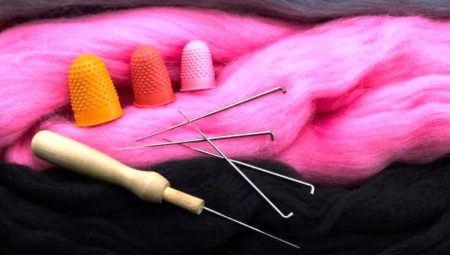
Felting wool without the use of liquids (felting) often requires tools that are quite complicated to make on their own. For example, you need a special needle that is different from those with which we sew. Hand dumping needles have a special structure. The serration of the felting needles is directed inward, towards the tip: when piercing the wool material, the hairs are pulled up with the point inward.
With the reverse movement, the woolen fabric gets confused and becomes denser. This is how the initially loose wool turns into tight felt.
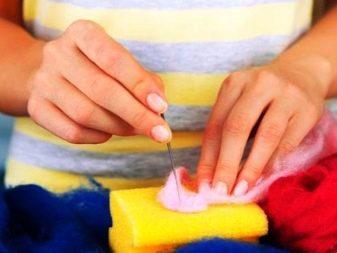
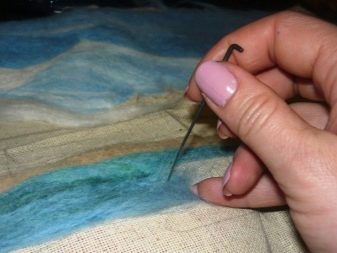
Standard set
The needles differ from each other only in the arrangement of the notches relative to each other. This is the main criterion for their classification by species. They are sold at any clothing store.
- The simplest needle is a triangular one. On each of the edges there are teeth, the direction of which allows you to keep the hairs well during the puncture.
- The star-shaped needle is tetrahedral. All of these faces are serrated. It allows you to more quickly knock down the wool denser. If the wool is not knocked off properly with a regular three-sided needle, it is with the help of the star-shaped needle that the wool is better knocked off.
- Swirling sprocket - this is an even more comfortable needle to use. Its barbs are arranged in a spiral order, rather than at different levels as on a simple star-shaped needle.
- A needle with three curled edges does not leave any traces of work in the form of holes at all. It is perfect for finishing soft toys or small items.
- The coronal needle provides for the location of the notches at the very end of the working part, while the number of supplied villi is much less. So, with its help, doll strands can be styled much easier than using other similar tools. It makes it easier to secure parts of any small toy. This needle is reversed mainly due to the reversing sequence of notches.
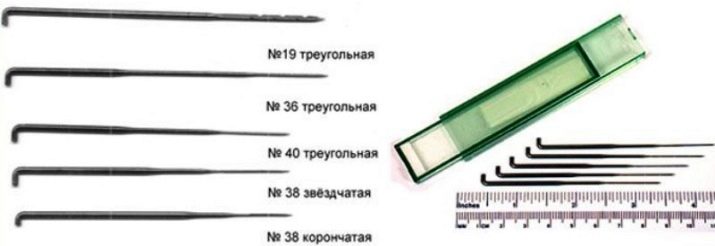
Important! For beginners, a regular triangular needle for various purposes is suitable, as well as a reverse needle.
Description of sizes
But the classification of needles for felting is not limited to only one form. Needles are numbered based on their actual thickness. The range of needle thicknesses is varied in 0.5–1 mm increments. The needle markings are similar to knitting needles. Its foreign meanings are as follows:
- size 40-43 - ultra-thin needle that allows you to subtly mark small areas and contours at the end of felting;
- size 36-38 - a needle of average size, most often used for stalling;
- size 19-34 - the thickest needles used for basic work.
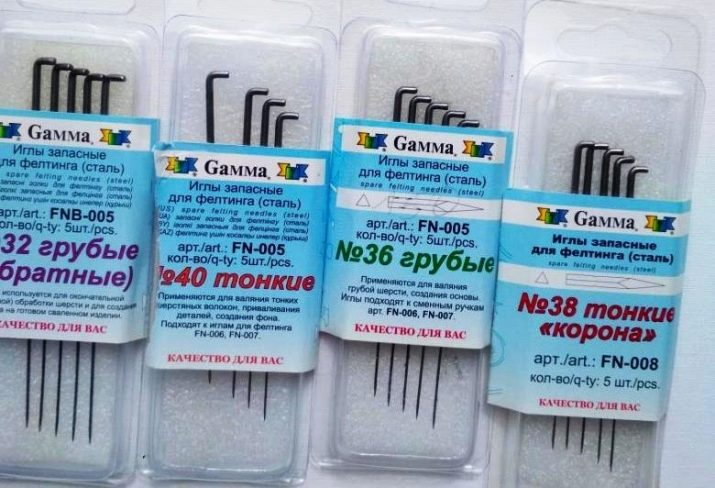
In Russia, the marking is as follows:
- An asterisk at 38 is considered large, 39 is medium, 40 is small;
- coronary at 38 - already thin;
- the twisted needle (36–40) is marked according to the actual thickness.
Most of the masters who are also felting wool still use a non-domestic number system.
"Star"
Star needles come in the following sizes:
- 38 - thick needle;
- 39 - medium;
- 40 is thin.
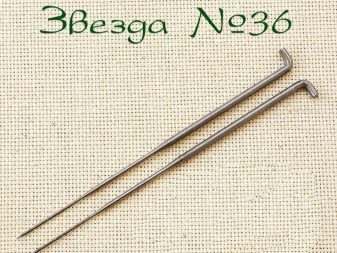
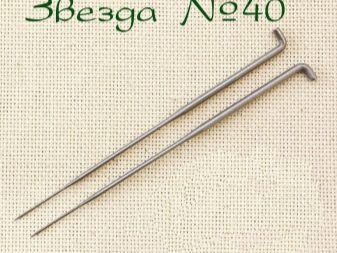
The twisted "star" ranges from 36 to 40. Coronal - from 38 to 43, with the barbs located closer to the end of the needle. Such a needle is most often used for near-surface work. "Star" and twisted needles, in contrast to simple triangular, are used to increase productivity. They are suitable for experienced craftsmen who have stuffed their hand on simple needles - for speed (star and twisted needles are high-speed ones) they pay with significant effort when pressed during wool roll.
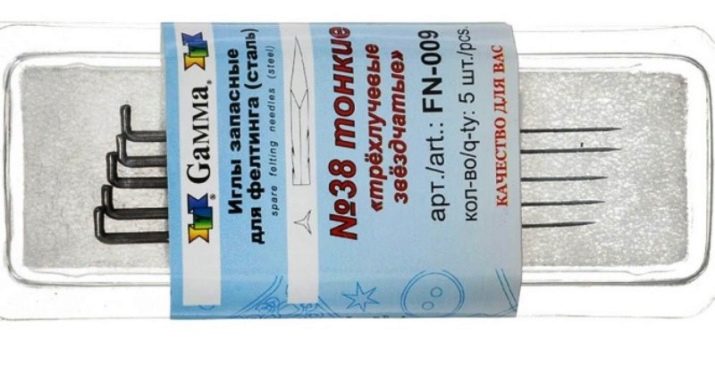
The twisted needle contains an axis that runs in the form of a spiral, which allows you to place more holds on it - more hairs are captured, and work productivity increases. The "asterisk" leaves smaller holes in the material, but captures more hairs - and therefore is considered the fastest due to deeper grooves on the sides. They run smoothly without breaking the fibers.
Triangular and tetrahedral "stars" are used most often - mainly 38th and 40th, the latter work well with the applicator. Conventional triangular needles do not felle wool as quickly and efficiently as "stars".
One way or another, needles with a star-shaped point are a popular tool in surface felting; novice craftsmen work with them.

Feedback
In the main work, the "return" is not involved, but for easy fluffing it is still needed. For example, on toys in the form of animals, fruits and flowers, it forms something like a light fluff. "Return" fluffs up the wool with reverse movements, which is why it got its name. It perfectly helps to felle the wool in hard-to-reach places where the original geometry is used, to make the hairs especially noticeable and textured.
The reverse needle has only two sizes - 32 and 40. It does not have an average size.
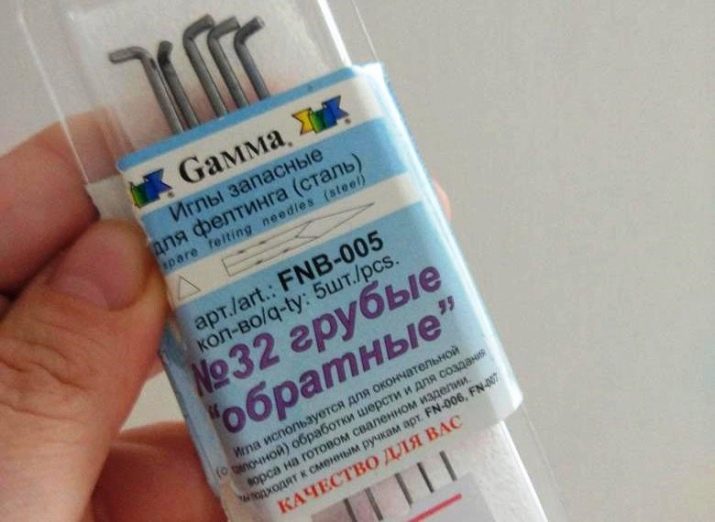
"Crown"
The corona needle is also suitable for hand felting and is used in specific applications such as deboning artificial hair for dolls and other textile toys. At the very end, there are 3 grooves that carry out a neat roll of long threads, without deepening them further into the material. The "crown" needle is used in specific places. If you use a crown with a different needle on the same tip, you will get a dent. This is why a needle like this is used to debonate a strand of hair.
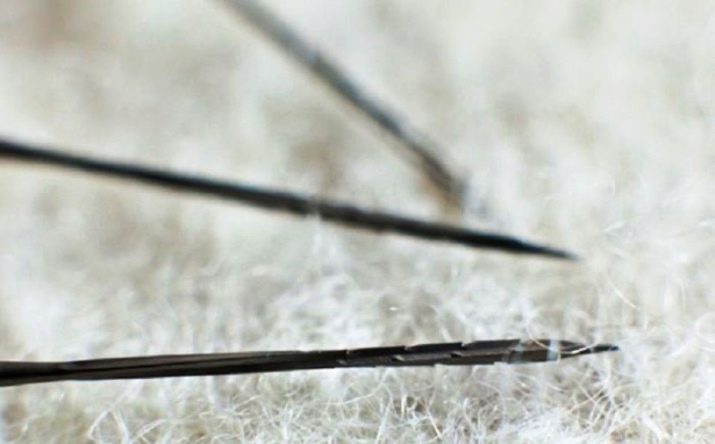
How to choose?
Felting needles often break from long and voluminous work. The force that is sometimes applied to the wool is not small - it can wear out the needle to such an extent that the steel will break. Russian products are represented, for example, by Gamma, but they are inferior in fragility and flexibility to the same foreign ones from Clover.
Germany and Japan were the best in the quality of needle manufacturing. It is the German and Japanese felting machines that are recommended for long-term and systematic work.
The felting needle should have a comfortable handle - preferably a wooden one. If a needle breaks down, there is no need to buy a new one with a handle - it is very easy to get a set of spare needles.

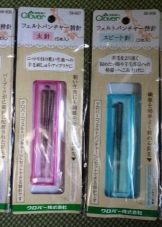

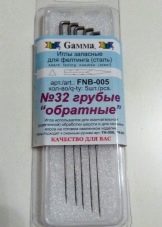
Feller's set
For accurate and high-quality work, the following inventory is required:
- needles;
- work mat (in the simplest case - thick foam rubber);
- bubble wrap (small goods from China are often packed in this);
- fluff brush;
- fixing device for needles (supports work with several needles);
- substrate for raw felting (sliver).
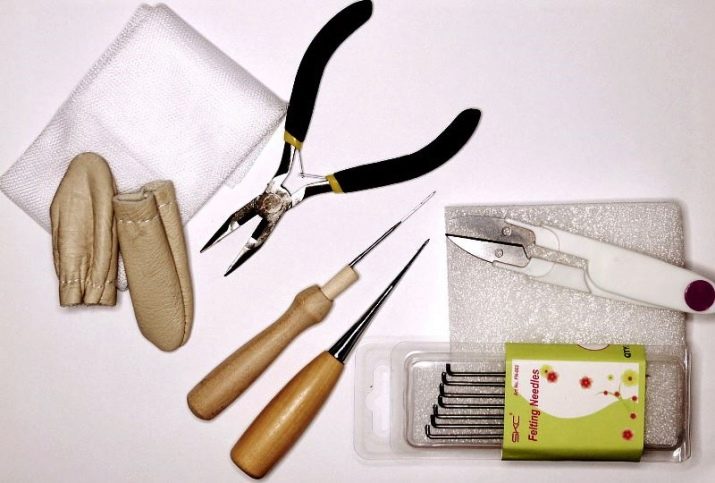
Important! Prepare wool to be felted.
Holders
Holders (applicators) are supplied with removable or non-separable bases. Replaceable ones allow you to work with several needles, monolithic ones - with only one, initially fixed in the applicator itself. But adapters are also supplied to the monolithic holders, allowing you to put felting on the stream - you can use up to 5 needles at the same time. Applicators are often made of wood or plastic.
Mostly wood or plastic. Applicators are best for short needles - long needles will stick out and make the process more difficult.
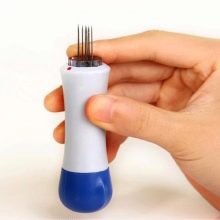


How to roll wool correctly?
The needle is located strictly perpendicular to the processed wool - at this angle it enters and exits from it. Distortions to either side will prematurely loosen the needle and lead to its early breakage. "Fatigue" of metals: the product simply breaks after millions of flexions and extensions.
Start with the thickest needle, not the other way around. Pre-tousled wool is required for non-sagging wool to make it easier to work with thinner needles. This means that a thick needle enters the unprepared wool much tighter, thinner ones are easy to break without first beating the material. But a thick needle will no longer fit into the felted wool - here, after giving the products the basic shape, medium and thin points are needed.
In no case, do not rotate the needle inside - the hairs will wind tightly around the needle, without tearing them out of the lump "by the root", it is almost impossible to free the tool.

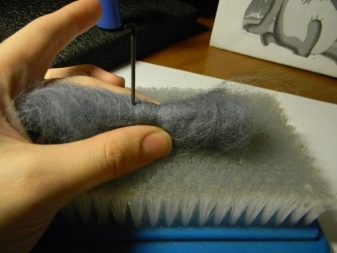
Craftsmen working with interior toys and souvenirs mainly use needles no larger than size 36. When the work is almost finished and the wool needs to be smoothed, a fine tool is required, up to the 43rd. For exceptionally small parts and souvenirs, thinner needles are also used - no larger than 40 needles. Try and look for the spread of needles that is convenient for you. The above recommendations will help to felle the wool with high quality, giving the product a finished and neat look.
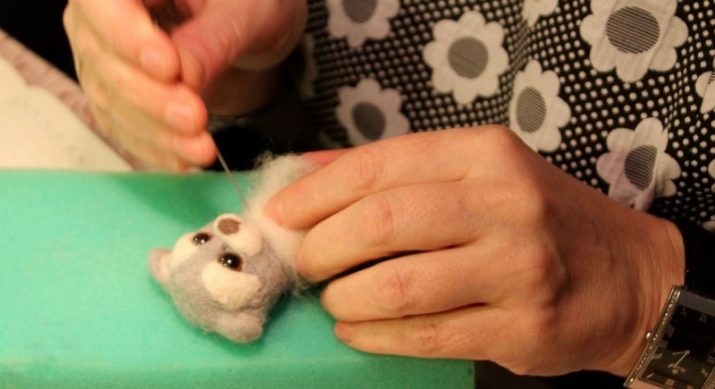
What can be replaced?
No, using homemade felting needles can only harm - the wool will not be felted, but torn. It is impossible to make a felt-needle yourself - their edges and holds must be thin, which is achievable only under factory conditions. The use, for example, of toothpicks with a sharpening similar to felling needles is not justified: the tree is fragile, the holds will quickly wear out, and such a homemade product looks like a simple "pick" that does not give an effect.
Use real felting needles.
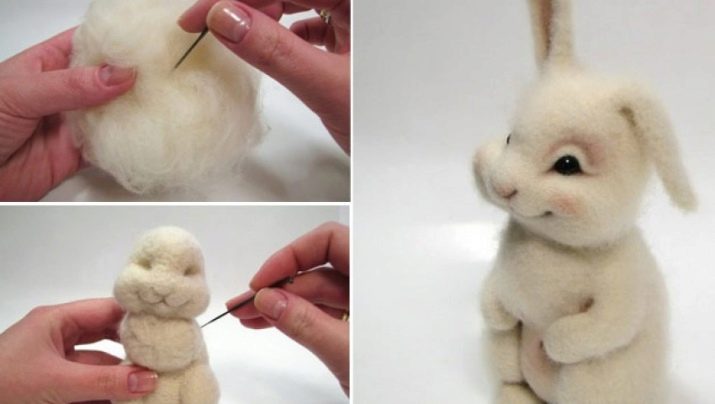
For information on how to choose and use felting needles, see the next video.








